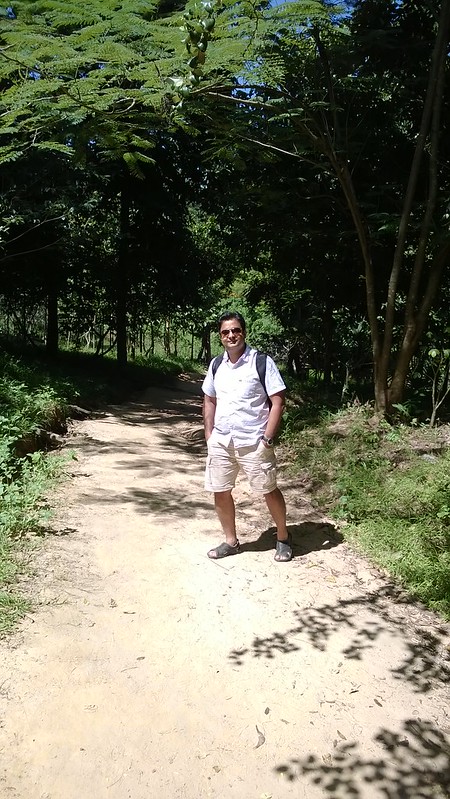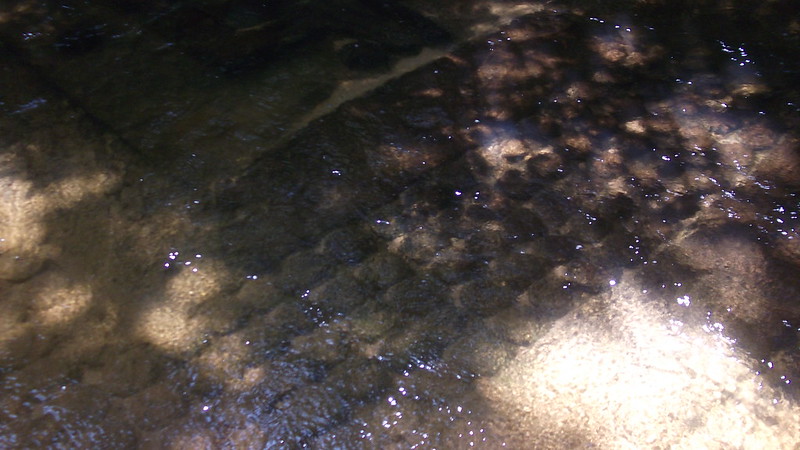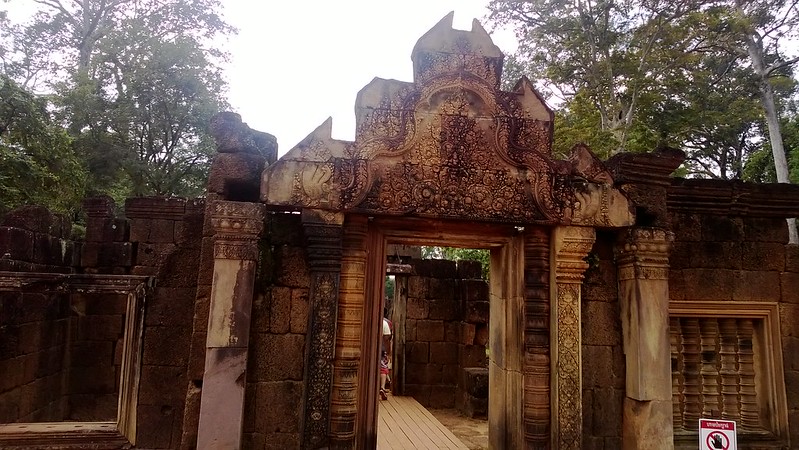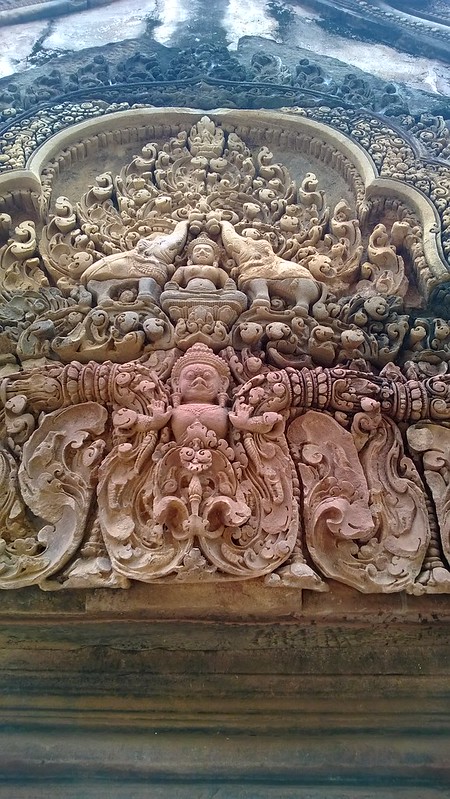Ladakh is the eastern district in the state of Jammu & Kashmir, bordered by Kargil to the west, Himachal Pradesh to the south & Tibet to the east. The region has a dry, "cold desert" climate, and is very sparsely populated. Leh is the capital city, and if located on the banks of the Indus river. Post 2009 (i.e. after Pangong Tso was prominently featured in the Bollywood movie "3 Idiots"), Leh has been known to have become very touristy. Even the remote banks of Pangong Tso are thronged with tourists during summer. So we naturally decided to go at the onset of winter... the time when all the tourists head back towards the plains.
Day-1: The First Glimpse of the Cold Desert
Flying in to Leh from Delhi, was a surreal experience. Due to the great heights of the Himalayan ranges, it seemed like our plane was just skimming the ground, and not flying at 30,000 feet.
 |
| Feels like you can reach out and touch the mountains here. |
The airport is located in a small clearing surrounded by rust-coloured craggy peaks. Despite this, the landing was smoother than some in larger cities! A rickety old mini-bus takes you from the plane to the terminal.
 |
| A small spartan airport with a rugged landscape. |
Leh is situated at an altitude of 3,500 m (11,500 feet), and there are signs all over the airport on altitude sickness. This was the first time both my wife and me had ventured this high in the Himalayas, and we had been advised by doctors to start medication (Diamox) the night before the trip. We had ignored this advice, and thought we'll deal with the problem when it presents itself. While driving to the hotel (The Grand Dragon), our driver Jordan also advised us on the medication, saying in broken hindi "
Aap logon ko zaroorat hoga" i.e. "you people from the plains need the medicine".
The first day in Leh is always spent in acclimatization. This is to prevent altitude sickness, irrespective of if you are popping the diamox pills or not. On reaching the hotel, we headed straight for their breakfast buffet, and enjoyed a nice slow breakfast in the sunshine outside.
 |
| Kawah in the winter sun. |
The hotel lawns and rooms face the "Stok Kangri" range, and we spent sometime looking at the arid mountains. The different ranges seemed to be painted in different colours - deep blue for the farthest ones to a yellow ochre to the nearer ones.
 |
| Room with a view. |
We started feeling the effects of the high altitude by mid-day. Although neither of us felt any nausea, dissiness or headache - all signs of altitude sickness as per the altitude sickness flyer kept in the room. However, there was a general feeling of lethargy and tiredness, and even walking up two flights of stairs got us breathing heavy. We spent the time organizing and negotiating the itinerary for the next few days with the hotel's travel agent. One of the disadvantages of the winter travel was that most tour organizers were closed for the season. So we had to deal with the higher rates of the hotel-organized taxis. The itinerary included the Indus confluence on Day-2, Pangong Tso (a lake close to the border with China) on Day-3, and Leh Palace & Hemis Monastery on Day-4. Pangong Tso was quite steep at Rs. 8,800 for a round trip, but this included packed food and oxygen cylinders.
Day-2: The Mighty Indus, Ancient Monasteries, and Guru Nanak in Leh
The next day, we woke up almost fully acclimatized, and were ready for the trip. I had asked for the same driver who had picked us up from the airport - Jordan. Off we went after breakfast - driving a short distance out of Leh town to the confluence of the Indus and Zanskar rivers. The Indus is one of the great rivers of the Indian Subcontinent, and significant in that it gave the nation it's name. Called "Sindhu" in ancient Vedic texts, it soon became "Hindu" and "Hind" to Arabs who could not pronounce the 'S', and the French silenced off the 'H' into "Inde", which the English then called "India". The oldest known civilizations in India settled along the banks of this river. The Indus was to us what the Euphrates was to Mesopotamia and the Nile to Egypt. The might of the river is very apparent, as it changes the landscape near Leh - carving out a thin oasis of grass and poplar trees which stand is stark contrast to the slate grey mountains.
 |
| The Indus supporting tree life in the barren mountains |
On the way, we also encountered the so-called "Magnetic Hill" outside Leh. The urban legend is that the hill has magnetic properties that moves your car forward with the engine off, even though it is uphill. One of the explanations is that the road looks like it is uphill due to optical illusion, but is actually downhill.
 |
| "Magnetic Hill" outside Leh. |
The Zanskar is a tributary that joins the Indus at almost a right angle. The turquoise colours of the two rivers really stand out among the mountains.
 |
| Confluence of the Indus and Zanskar rivers. |
Jordan drove us right up to the banks of the confluence. There was just one more tourist family there, so the off-season trip seems to have paid off here. We could enjoy the beauty of the place without jostling with tourists.
 |
| Confluence of the Indus and Zanskar - up close. |
We sat on the banks and enjoyed a cup of Kashmiri kawah tea, before moving on to Alchi village - home to a 11th century monastery. The drive to Alchi was a long one winding through high plateaus, and interestingly, while it was cold outside, the car gets quite uncomfortably hot due to the strong sunshine. It was a very strange feeling - a bit too warm inside the car, but if you touch the window pane, it's freezing cold!
Alchi village turned out to be almost completely shut down and deserted. We could see empty guest houses, deserted "German" bakeries and tourist souvenir shops. It is probably quite vibrant in the summers, but now there was not a single tourist around. Alchi monastery is actually a collection of small shrines and temples in this village.
 |
| Sumstek temple in Alchi Monastery |
Unfortunately, the Lama of the temple was also taking a off-season break, and we had to wait for him, as he had locked the main temple and gone shopping! We did visit some of the ancient shrines, and got to mix the the few locals who were praying there. The recurring theme was the four-directions Guardian Buddhist deity. We did not take any pictures inside as the shrines had wall paintings all over, and we did not want the flash to degrade the ancient pigment.
On the way back from Alchi, we visited the Gurudwara "Patthar Sahib". Legend has it that when Guru Nanak was visiting Ladakh, he meditated at this place. An evil demon was tormenting the people around this area, and this demon decided to attack the Guru by rolling a large boulder towards him. It so happened that the boulder did not harm the meditating Guru, but turned soft as molten wax and and acquired an impression of the Guru's back. The Gurudwara is built around this boulder, and hence "Patthar Sahib". It is now run by the Indian Army, and we joined in the langar or free lunch after visiting the shrine.
Next on the itinerary was the "Thiksey Monastery". This monastery has a history starting from the 15th century, and is the largest monastery in Ladakh.
 |
| Entrance to Thiksey village. |
The Monastery is built on the side of a hill, in the typical Tibetan architecture. It is said to be built as a replica of the Potala Palace in Lhasa, Tibet. A row of "chorten" stupas line the bottom tier, with various Monastery buildings after that, and the main building at the top.
 |
| Thiksey Monastery. |
Climbing up the steps to the main Monastery building, we got to see great views of the Thiksey village.
 |
| View of the village. |
Inside, there are many temples, with hardly a soul around, as it was the start of winter. We spent some time meditating in the Maitreya Buddha temple. Unfortunately, I dont have any pictures of this , but the Maitreya Buddha statue is huge - it starts on the ground floor of the temple, and extends up to the first floor.
 |
| View from the inside the main monastery - the Maitreya Buddha temple is on the left. |
I guess photography was prohibited (I dont really remember), or we were too spellbound to click pictures. Wikipedia has a picture of the statue in their article on
Thiksey Monastery.
 |
| Monastery courtyard. |
After Thiksey, there was one more place to see - this was the Shey Palace. This palace was used by the ruler of Ladakh as a summer capital. Strangely, the palace did not look like a palace at all. It is a very simple - drab even - grey coloured building. Inside are some simple buildings with Tibetan prayer wheels and large chorten/stupas.
 |
| Stupa inside Shey Palace. |
Overall, it does not look like a palace at all, but more like a very simple building. In fact, Thiksey Monastery looked way more majestic and imposing than Shey Palace. Perhaps it was deliberate that religious buildings were made to look more splendid than royal buildings. A King was, after all, not larger than God.
We ended the day with a visit to the Leh market. There is a Mughal-era mosque at the end of the market street. This was built during Aurangzeb's rule, as a compensation to the Mugals for sending troops to help crush an invasion from a neighboring princely state.
 |
| Mughal-era mosque. Leh Palace can also be seen in the background (above, right). |
The Leh market is a bit disappointing, as it hardly has any local shops. Sindh Bakerries and Punjab Dhabas, and Kashmiri Pashmina stores are prominent, while the local, Ladhaki shops are few. We walked in to one of these little shops, and got some tea, and then returned back to the hotel. Tomorrow we were scheduled for a longer drive to Pangong-Tso.


















































